Opinion & Analysis
The Most Important Fitting Elements for Accuracy
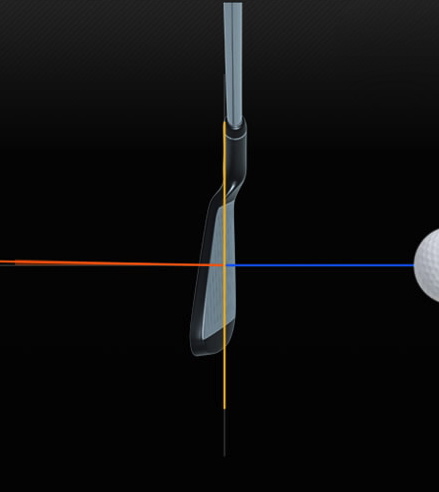
Golfers don’t enjoy the game when they struggle to keep the ball in play. There is no question the primary causes of inaccuracy result from errors in the golfer’s swing path and/or rotation of the club face back to the ball. However, through accurate clubfitting, it is possible to make changes in a number of specific fitting specifications of the clubs to visibly reduce the golfer’s misdirection tendencies.
It is also probable for changes in the some of the fitting specifications related to accuracy to be able to allow golfers to benefit more from lessons to more easily make changes in swing path and/or delivery of the face to the ball to result in accuracy improvement. Making swing changes in the path and face delivery change are much more difficult to accomplish when the clubs are too long and/or are the wrong total weight and swing weight for the golfer.
There is a limit to what clubfitting changes can do to achieve an improvement in accuracy. If the golfer’s slice or hook is too consistently severe, lessons to improve the golfer’s swing path and face delivery should always be the first priority. In general, if the golfer consistently slices or hooks the ball more than 30 yards of sideways movement, lessons should be always advised before a fitting change. But for golfers who slice, hook, push or pull the ball from 10 to 30 yards, accurate fitting for the specifications which do have a significant effect on accuracy will enable them to experience a definite level of accuracy improvement.
The fitting changes that can improve shot accuracy do not typically CURE or completely eliminate the inaccuracy of the golfer’s shots. They act to REDUCE the severity of the misdirection shots and tighten the overall range in shot dispersion for the golfer.
To do everything you can to improve shot accuracy through clubfitting changes, the following are the key fitting elements which have a bearing on accuracy. Through our research we have been able to identify which fitting specifications have a major effect (“A effect” specifications) and others which have a medium effect (“B effect” specifications). In addition, some of the fitting specifications show their effect for accuracy more with one segment of the clubs than with others. In the chart accompanying this article, we have identified which fitting specs have more of a major “A effect” on accuracy, which have a medium “B effect” and which have “no effect” on accuracy.
The most significant “A effect” fitting specifications which have a direct effect on shot accuracy are:
- Lie angle in the irons, wedges and putter.
- Face angle in the driver, fairway woods and hybrids.
- Club length, particularly so in the driver and fairway woods.
- The shaft weight, total weight and swing weight.
The “B effect” fitting specifications which have a little less of an effect, yet which still can bring about improvement in accuracy are:
- The face progression/offset, the center of gravity (CG) location.
- Lie angle in the driver and fairway woods.
- The torque, flex and bend profile of the shaft.
- Grip size.
- The set makeup selection of the clubs.
Click here to see what members are saying in the forums.
The A Effect: Fitting specifications for accuracy
1. Lie Angle
The higher the loft of the club head, the more the misdirection angle caused by an improperly fit lie to the golfer will translate into an off-line shot. The lower the loft of the club head, the less this is a visible factor for accuracy. Without question, every golfer needs to have each of their irons, wedges and yes, the putter correctly fit for lie angle for their physical stature, swing characteristics and posture/hands position through the ball. Without question, lie fitting must be done in one of the two dynamic lie fitting methods – either with the lie board or the ink on the back of the ball method. And the reason the putter lie is so important even though it has the lowest loft of all club heads is because the target for the putt is so small (4 1/4-inch small!).
2. Face Angle
Proper fitting of the face angle of the driver, fairway woods and hybrids is the number one most effective means to reduce the golfer’s misdirection tendencies with the driver, woods and hybrids to bring about visible improvement in accuracy. Using a more closed face angle to reduce the severity of a slice or a more open face angle to reduce the amount of hook is not a “Band-Aid” for the golfer’s swing path and face delivery errors. A change in the face angle acts as a direct 1:1 correction for the number of degrees the golfer leaves the face open or closed at the moment of impact. How much does a face angle change correct for a slice or hook? Based on a carry distance of 200 yards, a 1-degree change in the face angle from the face angle the golfer has results in a 4- to 5-yard reduction in the slice or hook. For a golfer with a 20- to 30-yard slice or hook, a face angle that is 2 to 3 degrees more closed/open THAN WHAT THEY CURRENTLY PLAY can easily be the difference between the ball being in play or out of play.
3. Club Length
The longer the length of the club, the higher will be its assembled club MOI. We’re not talking about the MOI of the head itself — we’re talking about the MOI of the fully assembled club. The higher the MOI of the club, the more load the club places on the golf swing for the golfer to overcome to be able to swing the club on the proper path and rotate the face back around to impact. The more load the club places on the swing, the more the weaker elements of the swing are subject to becoming more inconsistent.
For golfers with an outside-in path, a forceful transition move, a faster tempo and an earlier release, a longer-length driver and fairway woods will contribute to inaccuracy of the shot.
The reason that longer length is not as much of an accuracy problem with the irons is because irons as a group are much shorter in relation to the driver and fairway woods. In addition, few golfers play irons that are more than 1-inch longer than the old standard of 30-plus years ago. Not so with drivers where today’s “standard length” is 2 to 3 inches longer than the driver length standard of 30-plus years ago. That means that few golfers end up playing with irons that are more than 0.5 to to 1 inch off from what they should be playing. Today’s 45.5 to 46.5-inch driver lengths and 43.5-inch 3 wood lengths seen on so many retail models are much longer than what most golfers have the ability to control.
4. The Shaft Weight, the Total Weight and the Swing Weight
In combination together, the shaft weight, total weight and swingweight/MOI of the clubs can definitely be an “A Effect” for accuracy improvement. If the overall weight or feel of the clubs is too light or too heavy for the golfer’s transition force, downswing tempo, strength and individual perception for weight FEEL, more severe mistakes can be made in the swing path, release and on-center hit proficiency that will affect accuracy.
Of these, the swingweight/MOI (the headweight FEEL) is the most important contributor for effect on accuracy. The reason is because the swing weight/MOI can be increased to offset the effect of a shaft weight/total weight that is too light for the golfer. On the other hand, if the shaft weight/total weight is too heavy for the golfer, no swing weight/MOI adjustment can overcome the effect of a too heavy shaft weight/total weight on accuracy.
Remember, the weight of the shaft is the number one controlling factor for the total weight, so when you are fit for the shaft weight, you are covering 95 percent of the fitting for total weight at the same time. Hence from a fitting standpoint, shaft weight and total weight are considered the same thing. Only when an excessively heavy or extremely light grip is used does the weight of the grip show a noteworthy effect on the total weight of the clubs.
These combined “weights” of the golf club have to be fit to match each golfer’s unique combination of transition force, downswing tempo, strength and any personal preference for what the golfer perceives to be the “right weight feel.” If the weighting of the clubs is too light, either in total weight or head weight feel (swing weight/MOI), golfers with a stronger transition, faster tempo and greater strength can get too quick with their swing tempo and greater inaccuracy can result from the golfer not being able to achieve a consistent swing path and/or delivery of the face to impact.
Conversely, if the weighting of the clubs is too heavy in either the total weight or swing weight for the golfer’s transition, tempo, strength or feel, the golfer’s with the consistency of path and face angle delivery to the ball will also suffer. Either way, if the weighting of the clubs is matched properly to the golfer’s transition, tempo, strength and feel preference, the golfer can improve the consistency of the accuracy of the shot.
Click here to see what members are saying in the forums.
The B Effect: Fitting Specifications for Accuracy
The concept of the B Effect specifications on each of the game improvement factors is to say that on their own, each of these specifications may not bring about much more than a subtle improvement. However, if any of the B Effect specifications are poorly matched to the golfer in his/her current clubs, it then is more likely the change in the B Effect specifications can offer visible improvement. However, in combination, the proper fitting of several to all of the B Effect specifications can add up to be almost as important as some of the A Effect specs on a game improvement factor.
1. The Face Progression/Offset and the Center of Gravity (CG) location in the club head
The chance for the FP/Offset or CG to bring about any improvement in accuracy depends heavily on whether these elements were very poorly matched to the golfer’s swing characteristics in the present or previous clubs. Less face progression/more offset as well as a lower CG can generate a slightly higher ball flight with more spin, which for some golfers may combine with an open or closed face at impact to accentuate the amount of hook or slice spin on the ball.
Conversely, more face progression/less offset as well as a higher CG can generate a slightly lower ball flight with less spin, which for some golfers may combine with an open or closed face at impact to slightly reduce the amount of hook or slice spin on the ball. Seriously though, these are slight factors at best which border on being no factor for accuracy for many golfers.
2. Lie Angle in the Driver and Fairway Woods
The higher the loft, the more an ill-fit lie angle contributes to misdirection on the shot. Even though the driver and fairway woods are hit farther than the irons, because of their much lower loft, there is so much less of a misdirection angle of the face that the longer distance these clubs are hit does not cause a less than perfect driver/fairway wood lie to contribute very much to inaccuracy.
However, it should be said that for many golfers, modern fairway wood lies are too upright and can affect the solidness of the shot as well as a smooth travel of the sole on the ground through impact. As such, if the hosel design of the fairway wood will allow the lie to be adjusted to better fit the golfer and allow the sole to travel level through impact, by all means that should be done as a part of the fitting process.
3. The Torque, Flex and Bend Profile of the Shaft
In modern shaft design, 98 percent of the time the torque is designed to coordinate with the overall stiffness (Flex) of the shaft. In other words, you’re not going to find a 5-degree or 6-degree torque in an X-flex shaft and you’re rarely going to see a 2-degree or 3-degree torque in an A- or L-flex shaft.
Shaft designers realize that a substantial part of the swing characteristics that cause a shaft to bend more (the transition force to start the downswing along with the club head speed) are also the swing elements that cause the shaft to twist (torque). Hence when the overall stiffness (flex) is fit correctly to the golfer, rarely will there be a case when the flex is fit correctly but the torque is far enough off to be a cause of misdirection for the shot. Occasionally with VERY aggressive swingers, but not very often. From a shaft feel standpoint, yes, there are golfers who can detect the stiffer feel that comes from a lower torque, but from a pure accuracy standpoint, 98 percent of the time the golfer is correctly fit for the flex and the bend profile of the shaft, he will also be properly fit for the torque from the standpoint of accuracy.
There are some golfers who swear that playing too stiff or too flexible of a shaft will have a significant effect on accuracy. It is true that if a golfer with a later-to-late release were playing a shaft that was two full flexes too stiff or too flexible for his swing, there would be a visible change in the flight shape of the shot — higher and with a little more tendency for a draw. But even if a late-release golfer were to use a shaft that would be two full flexes softer than what he needed, the result would only be a visible increase in a draw only if the golfer’s natural flight tendency was to draw the ball. But rarely would the increase in draw be enough to hit the ball out of play.
The reason some golfers experience an accuracy problem playing with the wrong flex is chiefly because a feel-sensitive golfer’s perception of poor flex feel can cause the golfer to make swing errors/changes that result in a drop in accuracy. A bad feeling shaft can cause some golfers with a fine sense of perception to swing differently than they will when playing a shaft that feels just right. But this is not the case with the majority of golfers who do not have a specific perception of bending feel for the shaft.
The primary reason for properly fitting a golfer for the flex and bend profile of the shaft is to allow the flex/bend profile to combine with the loft of the club head to optimize the golfer’s launch angle, spin and angle of descent. In addition, as previously stated, proper flex and bend profile fitting is also important for fitting the golfer with the right bending FEEL that matches his preference for that type of feel. If the shaft flex and bend profile are fit properly for launch angle, spin and bending feel, it will have no significant effect on accuracy.
4. Grip Size
It is simply not true that all golfers who play with a grip that is too small will pull or hook the ball more, and all golfers who play with too large of a grip will push or slice the ball more because of the way the ill-fit grip size affects the golfer’s release. However, it is true that if the grip size does not feel comfortable to the golfer, this can translate into adversely affecting the golfer’s swing tempo, swing path and release, which in turn can affect the accuracy of the shot. Bottom line: Fit every golfer for a comfortable grip size and any possibility of the grip affecting the accuracy will disappear.
5. Set Makeup
How could the set makeup have an effect on accuracy? By replacing hard-to-hit clubs the golfer may be hitting more off line with clubs that are easier to hit by virtue of their design. That will result in better accuracy for the same distance.
For example, it is not uncommon for a golfer with an outside-in path and fast swing tempo to hit the fairway woods with some degree of inaccuracy, but be able to hit hybrids the same distance and more accurately because of the shorter length of the hybrids.
Conclusion
For the driver, fairway woods and hybrids, the key elements for maximum accuracy in the fitting process are the length, face angle and the combination of the shaft weight/total weight/swingweight (MOI) of the clubs. Within these three fitting elements, many golfers who presently suffer from misdirection problems most definitely can achieve a visible improvement in accuracy.
For the irons, the key elements for maximum accuracy in the fitting process are the lie angles along with the combination of the shaft weight/total weight/swingweight (MOI) of the clubs.
Get these fitting specifications perfectly matched to the golfer’s swing characteristics and pretty much everything that can be done to maximize the golfer’s shot accuracy will have been done. After that, if the golfer still suffers from a significant misdirection problem, the remedy will be lessons to work on improving the golfer’s alignment, posture, swing path and delivery of the face to impact.
Click here to read Tom Wishon’s series on the proper way to select a shaft
- LIKE19
- LEGIT1
- WOW1
- LOL0
- IDHT1
- FLOP0
- OB0
- SHANK0
19th Hole
Vincenzi: The 8 best prop bets for the 2024 Masters
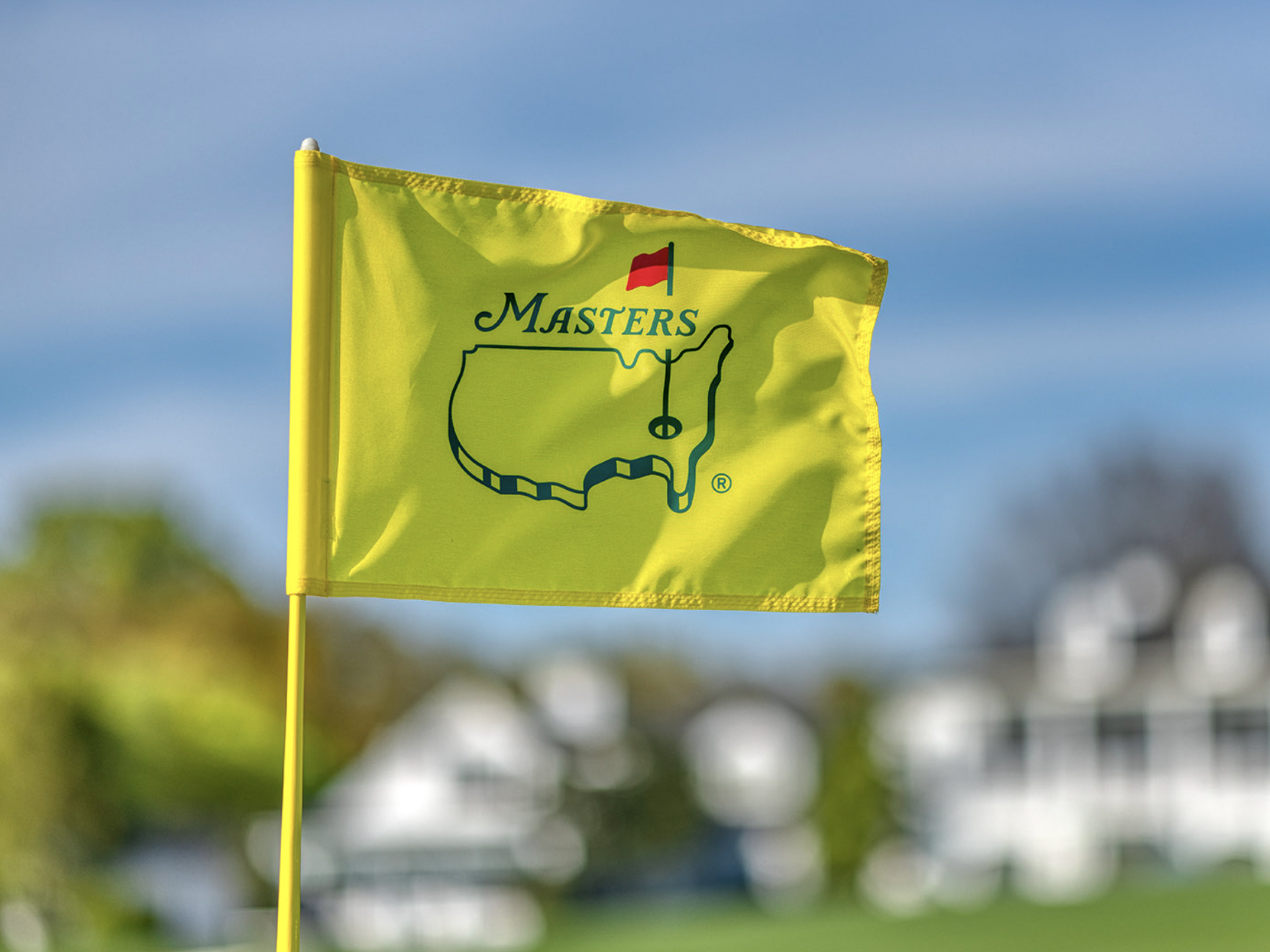
We’ve finally reached The Masters and excitement is at an all-time high. The world of golf has been fractured for the better part of two years, but for a week at Augusta National, all of the outside noise will disappear. All of the best players in the world will be together seeking to make history.
In addition to betting on The Masters champion. This is one of the few weeks of the year where there are so many more markets to explore, with value to be had in plenty of different categories.
Throughout this article, I’ll discuss all of my favorite props and players for the 2024 Masters.
Placement Bets:
Tony Finau Top 5 +750 (DraftKings):
I badly wanted to include Tony Finau in my outright betting selections, but I simply ran out of room on my card. Additionally, it’s slightly difficult to see him hitting the putts necessary to win the Masters on back nine on Sunday. However, I do strongly believe he will play great golf this week at Augusta National.
In his past 24 rounds, Finau ranks 4th in Strokes Gained: Approach is always amongst the best drivers of the golf ball in the game. Back in 2019, Finau had a great chance to win The Masters. I expect him to be hanging around over the weekend once again in 2024.
Gary Woodland Top 20 +550 (DraftKings), Gary Woodland to make the cut -110 (DraftKings):
Last season, Gary Woodland had his best ever finish at The Masters in his eleven tries. The 39-year-old finished T14 and played incredibly steady across all four rounds.
In Woodland’s most recent start at the Texas Children’s Houston Open, he struck the ball incredibly well. He led the field in Strokes Gained: Approach (+8.8) and Strokes Gained: Ball Striking (+10.0).
Gary has been working with Butch Harmon and absolutely flushing the ball both in tournaments and during practice.
Woodland appears to be healthy once again and in a great place physically and mentally. If he can build off his impressive performance at Augusta last year, he can place inside the top ten in 2024.
Additionally, the make the cut number on Woodland seems generous considering the number of players who miss the cut will be relatively small this week. Woodland is striking it well enough to make the cut even if he’s hindered by a balky putter once again.
Thorbjorn Olesen Top 20 +400 (FanDuel):
The Thunder Bear, Thorbjorn Olesen, made his Masters debut in 2013 and finished an incredibly impressive T6 for the week. In the two additional starts he’s made at Augusta National since then, the Dane has continued to be incredibly solid, finishing T44 and T21.
This week, Olesen heads into the week playing some good golf. He gained 3.8 strokes on approach and 5.52 strokes around the green at last week’s Valero Texas Open on his way to a strong T14 finish. Back in January, he won the Ras Al Khaimah Championship on the DP World Tour.
Olesen has the skill set to be successful at Augusta and seems primed for a good performance this week.
Top Nationalities:
Sergio Garcia Top Spanish Player +280 (DraftKings):
I believe Sergio Garcia can get into contention this week with the way he’s striking the ball in addition to his good vibes with a refurbished version of the Scotty Cameron that he used at the 1999 PGA Championship at Medinah.
I am slightly concerned about the emotional letdown he may face after losing in a playoff at LIV Miami, but I believe a veteran and former Masters champion should be able to regroup and focus on an event far more meaningful.
This is essentially a tournament head-to-head with Jon Rahm at +280. While Rahm deserves to be respected this week, the history of the lack of success of defending champions at The Masters is difficult to ignore.
Joaquin Niemann Top South American Player -230 (FanDuel):
While I hate paying this much juice, I don’t see a world in which Joaquin Niemann isn’t the top South American this week at The Masters. Joaco comes in playing better golf than anyone in the world not named Scottie Scheffler and has a serious chance to win the green jacket.
He only needs to beat two players: Emiliano Grillo and Camilo Villegas.
Tournament Head-to-Heads:
Justin Thomas -110 over Collin Morikawa
JT isn’t having his best season but is playing a lot better than he is getting credit for at the moment. In the past three months, there are only six players on the PGA Tour who have averaged 1.7 Strokes Gained: Tee to Green or better. Justin Thomas (+1.7) is one of the six and is currently tied with Rory McIlroy (+1.7).
Morikawa, on the other hand, has been extremely poor with his irons, which is incredibly uncharacteristic for him. I can’t help but feel like something is completely off with the two-time major champion.
Tony Finau -110 over Wyndham Clark
I explained in the placement section why I’m so high on Tony Finau this week. With how well he’s striking the ball, it seems as if his floor is extremely high. I’m not sure if he can make the putts to win a green jacket but I believe he will be in the mix similarly to 2019 when Tiger Woods emerged from a crowded pack of contenders.
Clark is a debutant, and while some debutants have had success at The Masters, it certainly poses a challenge. I also don’t believe Augusta National suits Clark as well as some of the other major championship venues.
- LIKE9
- LEGIT5
- WOW3
- LOL0
- IDHT0
- FLOP0
- OB0
- SHANK3
19th Hole
Vincenzi’s 2024 Masters betting preview: Niemann to play star role at Augusta National
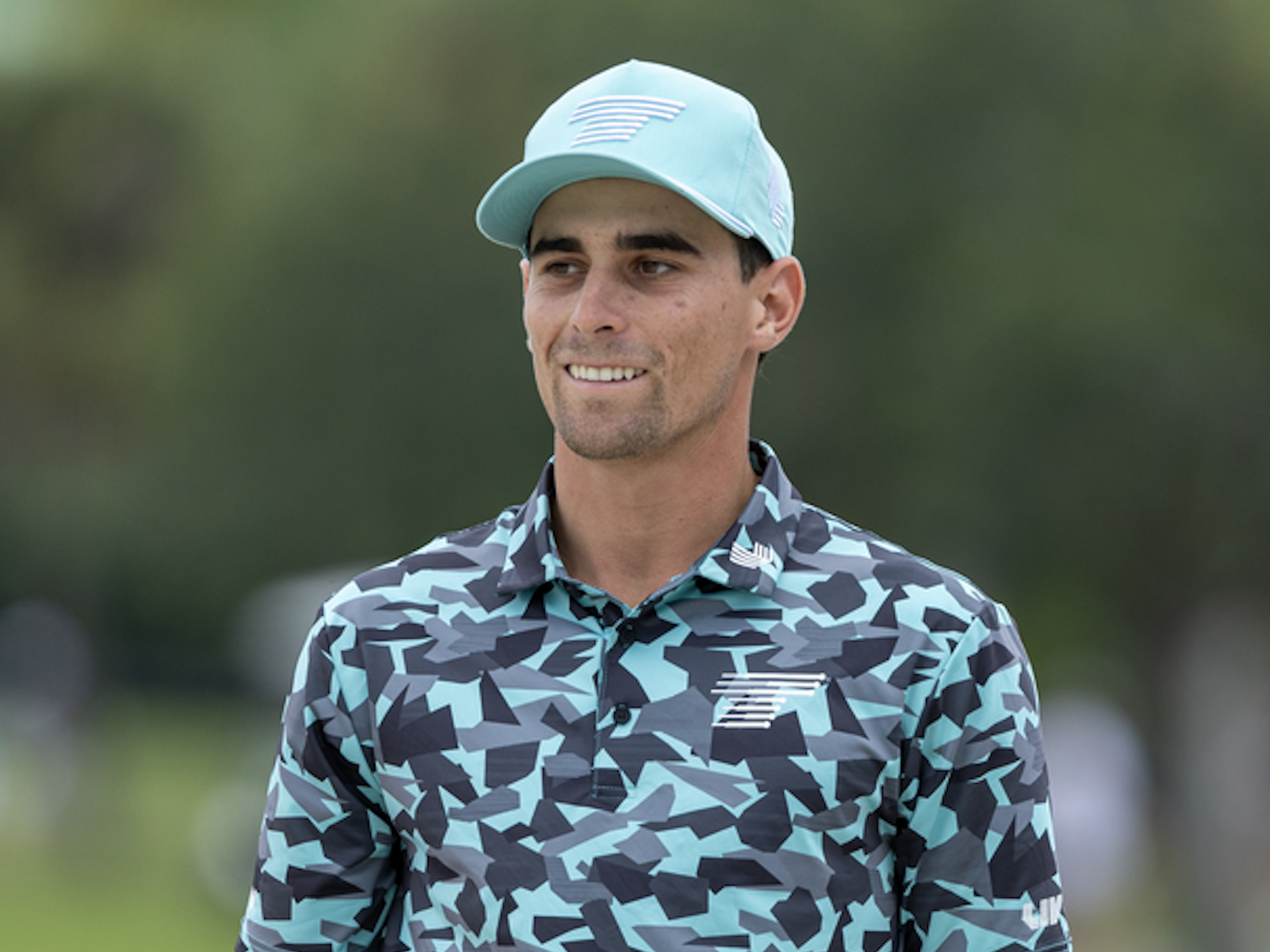
It’s been over nine months since we saw Brian Harman parlay a dominant performance at Royal Liverpool into a claret jug. After another major offseason filled with a feud between the PGA Tour and LIV Golf, talks of a merger, and a multitude of questions regarding the future of the game, the golf world is desperate for all of the best players in the world to come together again for a major championship.
We return to Augusta National with excitement at a fever pitch. Scottie Scheffler has separated himself as the best player in the world heading into the Masters. At the moment, the 27-year-old seems to be an unstoppable force. However, questions about Scheffler’s up-and-down putter once again resurfaced as he missed multiple short putts at the Texas Children’s Houston Open including a 5’11” putt to force a playoff with Stephan Jaeger.
Additionally, a handful of the PGA Tour’s top players such as Justin Thomas, Rory McIlroy, Will Zalatoris, Patrick Cantlay, Tommy Fleetwood and Jordan Spieth make their way to Augusta National with their current form in question.
Plenty of LIV golfers may be up to the task of conquering Augusta, but with so much time in between the last two majors, it’s not always easy to decipher how their games will stack up against Scheffler and co.
Last year, some important changes were made at Augusta National. The par-5 13th (Azalea) was lengthened by 35 yards and now measures 545 yards. Last year, Azalea played as the toughest of the four par 5s, and players averaged 4.74 for the week, which was down from 4.85 in 2022. However, eagles, birdies and bogeys were all up, so the lengthening achieved less pars, which equals more excitement.
Without further ado, let’s get into the course breakdown and analyze some important statistics for Augusta National.
Augusta National is now a 7,510-yard par-72 with lightning-fast Bentgrass greens. The course’s primary defenses are the contoured greens, swirling crosswinds, the topography of the course, which creates uneven lies and the small landing areas that golfers will need to hit to avoid tight run-off areas around the greens.
Past Winners at the Masters
- 2023: Jon Rahm (-12)
- 2022: Scottie Scheffler (-10)
- 2021: Hideki Matsuyama (-10)
- 2020: Dustin Johnson (-20)
- 2019: Tiger Woods (-13)
- 2018: Patrick Reed (-15)
- 2017: Sergio Garcia (-9)
- 2016: Danny Willett (-5)
- 2015: Jordan Spieth (-18)
- 2014: Bubba Watson (-8)
- 2013: Adam Scott (-9)
- 2012: Bubba Watson (-10)
- 2011: Charl Schwartzel (-14)
- 2010: Phil Mickelson (-16)
In this article and going forward, I’ll be using the Rabbit Hole by Betsperts Golf data engine to develop my custom model. If you want to build your own model or check out all of the detailed stats, you can sign up using promo code: MATTVIN for 25% off any subscription package (yearly is best value).
Key Stats For Augusta National
Let’s take a look at the six most important metrics at Augusta National and determine which golfers boast top marks in each category over their last 24 rounds. This should give us a good starting point for building out a betting card.
Strokes Gained: Approach
Approach is historically the most important statistic at Augusta National. The sloping, speedy greens and run-off areas create small landing spots that can be difficult to hit.
Last year, Jon Rahm ranked 6th in the field in Strokes Gained: Approach. Overall, five of the past seven winners at Augusta have ranked in the top 6 in the category. Distance helps, but Augusta National is a second-shot golf course.
Total Strokes Gained: Approach in past 24 rounds:
- Scottie Scheffler (+1.30)
- Corey Conners (+0.99)
- Shane Lowry (+0.88)
- Tony Finau (+0.85)
- Austin Eckroat (+0.85)
Course History
More so than any other course on TOUR, familiarity with Augusta National is crucial. Only one player has ever won the Masters on their first try — Fuzzy Zoeller in 1979. Meanwhile, there are 17 golfers in history who have multiple green jackets.
In most cases, the Masters champion has shown some good form at Augusta in the past. Prior to Scottie Scheffler’s 2022 victory, he finished T19 and T18 in his first two trips to the course. Prior to 2023, Rahm had finished in the top-10 of four of his six starts at The Masters.
Total Strokes Gained: Total at Augusta National in past 36 rounds (per round, minimum eight rounds):
- Will Zalatoris (+2.91)
- Jon Rahm (+2.28)
- Jordan Spieth (+2.22)
- Scottie Scheffler (+2.22)
- Dustin Johnson (+2.01)
- Rory McIlroy (+2.00)
- Hideki Matsuyama (+1.90)
- Justin Rose (+1.85)
- Rickie Fowler (+1.72)
- Russell Henley (+1.60)
Par 4 Scoring Average
Since plenty of players can reach the par 5s at Augusta in two, par-4 scoring becomes more important. The golfer who separates themselves on the par 4s will be able to gain ground on the field.
Par 4 Scoring Average in past 24 rounds:
- Scottie Scheffler (+3.88)
- Chris Kirk (+3.92)
- Jordan Spieth (+3.93)
- Peter Malnati (+3.93)
- Xander Schauffele (+3.93)
Strokes Gained: Around the Green
Golfers with a solid short game tend to fare well at Augusta National. The run-off areas are treacherous, and players will often be scrambling to get up and down.
The majority of players who have won at Augusta National have a great short game and have shown consistent ability to get up and down from tough spots.
Total Strokes Gained: Around the Green in past 24 rounds:
- Hideki Matsuyama (+0.71)
- Scottie Scheffler (+0.66)
- Patrick Reed (+0.61)
- Xander Schauffele (+0.53)
- Lucas Glover (+0.51)
Strokes Gained: Off the Tee
Augusta National is most definitely a second shot golf course. Golfers can get away with a missed fairway here and there, however, it’s important that the misses with driver aren’t too wide of the target or there is serious trouble to be had.
Total Strokes Gained: Off the Tee in past 24 rounds:
- Bryson DeChambeau (+1.04)
- Rory McIlroy (+0.85)
- Scottie Scheffler (+0.84)
- Xander Schauffele (+0.71)
- Ludvig Aberg (+0.68)
Strokes Gained Putting: Fast Bentgrass
The USGA calculates that, on average, the greens at Augusta National are the fastest greens in the country. Three-putting is fairly common at Augusta and golfers must be able to combat the speed of the greens with effective lag putting.
Total Strokes Gained: Putting on Fast Bentgrass in past 24 rounds:
- Justin Rose (+1.43)
- Sahith Theegala (+0.97)
- Min Woo Lee (+0.88)
- Cameron Smith (+0.70)
- Patrick Reed (+0.70)
Statistical Model
Below, I’ve reported overall model rankings using a combination of the six key statistical categories previously discussed.
These rankings are comprised of SG: App (25%); Course History (16%); Par 4 Scoring Average (10%); SG: Putting on Fast Bentgrass (16%); SG: OTT (16%). and SG: ARG (16%).
Last year, Jon Rahm ranked first in this model
- Scottie Scheffler
- Xander Schauffele
- Hideki Matsuyama
- Tony Finau
- Justin Thomas
- Shane Lowry
- Will Zalatoris
- Corey Conners
- Si Woo Kim
- Rory McIlroy
- Stephan Jaeger
- Jordan Spieth
- Chris Kirk
- Keegan Bradley
- Wyndham Clark
- Sahith Theegala
- Russell Henley
- Collin Morikawa
- Matt Fitzpatrick
- Patrick Reed
My 2023 Pick:
Jon Rahm (+950) (FanDuel)
A few months ago, I never thought that I’d be able to say that Rahm would be going slightly under the radar heading into the 2023 Masters. It’s not that Rahm has done anything wrong, but both Scheffler and McIlroy have undoubtedly surpassed him as the scorching hot, super-elite, top of the market betting favorite category.
Since his win at Riviera, the Spaniard has finished 39th at Bay Hill, withdrew at The Players Championship, and failed to get out of the group stage at the WGC Dell Match Play. On the other hand, Scheffler won The PLAYERS Championship and McIlroy finished third at the WGC Dell Match Play.
Rahm has made six starts at The Masters and has come in the top-10 in four of them. The 28-year-old has incredible power off the tee, a requirement at Augusta which always plays longer than the scorecard indicates. He’s also incredible around the greens and ranks third in the field in Strokes Gained: Short Game, which is a combination of around the green play and putting, in his past 24 rounds.
As we’ve seen over the years at The Masters, having the ability to chip and putt your way out of difficult situations is a fundamental aspect of getting it done at Augusta National.
While Scheffler has made a strong case to be viewed as the world’s best player, I still believe that title belongs to Rahm. This will be the year Rahmbo joins the ranks of Seve Ballesteros, José María Olazábal, and Sergio Garcia as natives of Spain to don a green jacket.
2024 The Masters Picks
Brooks Koepka +2500 (DraftKings)
In order to win the 2024 Masters, a player will have to go toe-to-toe with Scottie Scheffler, who’s hitting the ball as anyone in golf over the last two seasons. When building a betting card this week, it’s important for me to choose players that I believe can stare Scheffler down on the weekend at Augusta National. Brooks Koepka fits that bill.
Koepka’s lackluster performance at LIV Miami is concerning, but he’s the type of player who can turn it on quickly during the week of a major championship. Although I’d have preferred, he played well last week, I’ll take the odds discount we got as a result of his most recent results.
Prior to LIV Miami, Koepka appeared to be in solid form. He finished in the top twelve in four of five starts on LIV this season. When it comes to the five-time major champion, it’s well known that he has another gear for major championships. Everything he’s done both in the off-season and during the LIV season is to gear up for the year’s first major at Augusta National.
In his past five starts at Augusta National, the 33-year-old has three top-7 finishes, including two runners-up. The two years when he played poorly (2019 and 2020) were when he was nowhere near 100% healthy. All signs point to Brooks being in a great place physically as we enter major season.
Last year, Koepka was the 36 and 54-hole leader prior to letting the green jacket slip away to Jon Rahm. He used the result as a springboard to win his 5th major at Oak Hill at the PGA Championship.
Brooks enters the week looking to get one step closer to achieving the career grand slam and golf fans would be foolish to rule him out.
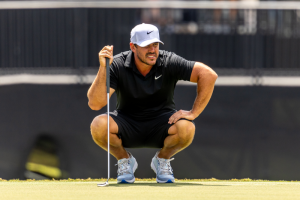
Joaquin Niemann +2800 (BetRivers)
Full disclosure, I bet Niemann the second he was invited to The Masters back in February at +8000. Although the odds have shortened dramatically since then, I can’t pretend that the Chilean isn’t one of the players who has a real chance to win the 2024 Masters.
While I was speaking with Niemann back in March, he told me how much he loves Augusta National.
“Yeah, it’s a place that I love. I’ve been playing good golf. Especially last year, I wasn’t playing my best golf, and I had a good week there and made triple on 11 that kind of killed me a little bit.
I feel like I’m getting more ready and more prepared every time. My game is getting better too. I know that I’m playing good enough to be in that situation that I can have a chance to win the Masters and it’s all about how I react to that situation.
So yeah, I’m going to prepare myself to be ready for that situation if it happens and I can fight for the title on the Sunday which would be awesome.”
As Niemann alluded to, the Chilean was able to have his best career finishes at The Masters (T16) despite not being in the best form. This year, Niemann comes into the week playing better golf than anyone in the world with the exception of Scottie Scheffler. The 25-year-old has won three times since December and has shown the world why he was regarded as one of the games future stars since he was a teenager.
Historically speaking, Joaco’s win at Riviera a few years back seems to be an indicator of potential success at Augusta National. Fourteen players have won at both historic courses including Hideki Matsuyama, Jon Rahm, Phil Mickelson, Dustin Johnson, Nick Faldo, Tom Watson and Ben Hogan.
Niemann has all the shots to be successful at Augusta National. His low stingers will come in handy on plenty of holes down the stretch and he can work it both ways, playing the high draw or the low fade. He also putts best on Bentgrass greens and likes them fast. Whether PGA Tour or LIV, talent will always reign supreme, and I’ll always bet on that talent.

Cameron Smith (+4000) (FanDuel)
Cameron Smith is another player who we should get an odds discount on based off of the results at LIV Miami. Smith was forced to withdraw prior to the second round due to food poisoning. In my opinion, the number has drifted to a place where I’d consider it a “bet the number” play on the talent.
Smith is a contender for the green jacket anytime he tees it up at Augusta National. The Australian absolutely loves the golf course and has four top-10 finishes in his last six trips to the golf course. In both 2020 and 2022, Smith had a real chance of winning The Masters and came up just short, finishing T2 and T3 in those two tries. In his past 36 rounds, he ranks 4th in Strokes Gained: Total per round at Augusta.
In order to be successful at Augusta National, players must be creative around the greens and be shot makers who have plenty of ways to get around the golf course. Cam has all the shots required to be successful at the course at his touch around the greens will continue to serve him well in his hopes for a green jacket.
Smith is arguably the best putter in the world and has the capability to win a golf tournament on and around the greens. He’s already taken down Rory McIlroy at the home of golf on his way to a claret jug and is one of the few players who can stare down any of the world’s top golfers on the back nine at Augusta National.
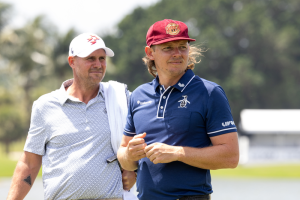
Justin Thomas +4000 (FanDuel)
With how he’s been playing since his 2022 PGA Championship win, you may be shocked to see the name “Justin Thomas” in this preview. However, JT has drifted to a place on the odds board where I believe it’s worth taking a shot on the talent of a two-time major champion in his prime.
It’s not all bad for Thomas this season. He finished T6 at the signature Pebble Beach event, T12 at the Waste Management Phoenix Open and T12 at the signature Arnold Palmer Invitational. In his last 24 rounds, JT ranks 8th in the field in Strokes Gained: Approach, 14th in Strokes Gained: Around the Green and 29th in Strokes Gained: Putting on fast Bentgrass greens.
Despite missing the cut last season, Thomas has played pretty well at Augusta National. He ranks 13th in Strokes Gained: Total in his past 36 rounds at the course. He finished T4 in 2020, T21 in 2021 and T8 in 2022.
I believe the 2024 edition of The Masters is completely wide open. The past few years has been frustrating for Thomas fans, but I believe his peak form may be a bit closer than people realize.
Sergio Garcia +12000 (FanDuel)
Earlier this season, Garcia dueled with Joaquin Niemann before finally losing on the fourth playoff hole late into the night. Despite the loss, the 44-year-old seemed to gain confidence in his game. The results that followed weren’t spectacular, but in terms of his ball striking he’s shown some flashes of vintage Sergio.
At LIV Miami last week, Garcia played well on a massive golf course, losing in a playoff to Dean Burmester. He continued pumped the ball into the fairway and hit massive iron shot after massive iron shot. He also used a refurbished Scotty Cameron that he used in the 1999 PGA Championship at Medinah. The putter served him incredibly well until he missed a short putt on the 18th hole to win the event. Overall, he gained 7.1 strokes putting at Doral.
Sergio Garcia is once again headed to Augusta National with a chip on his shoulder. Of course, having a chip on the shoulder is nothing new for the fiery Spaniard, but this year, the 2017 Masters Champion will arrive at Augusta with his game clicking on all cylinders.
Sergio winning a second green jacket is seemingly an almost impossible feat, but magical things tend to happen on the hallowed grounds of Augusta National.
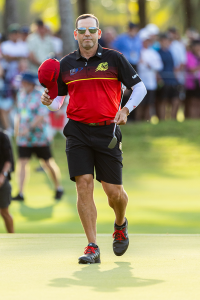
Adam Scott +11000 (FanDuel)
Betting Adam Scott over the past handful of years has been a Masters staple for me, and like many traditions, has been a hard one for me to let go of.
Last week, Scott finished T14 at the Valero Texas Open in a windy and difficult week. I believe the wind will be a major factor this week at Augusta National, and the more difficult the tournament plays, the more I favor Scott. Scott also ranks 5th in his past 24 rounds on Strokes Gained: Putting on Fast Bentgrass and has the short game these days that could help him contend in a major.
Since his win in 2013, Scott’s history at The Masters has been spotty. He has some poor finishes alongside a T9 in 2017 and a T18 in 2019. He’s been playing some solid golf this season, finishing T8 at the Waste Management Phoenix Open and T19 at the Genesis Invitational.
(All photos in piece belong to LIV Golf)
- LIKE35
- LEGIT22
- WOW8
- LOL2
- IDHT0
- FLOP6
- OB2
- SHANK23
Opinion & Analysis
The 22 players who can win the Masters
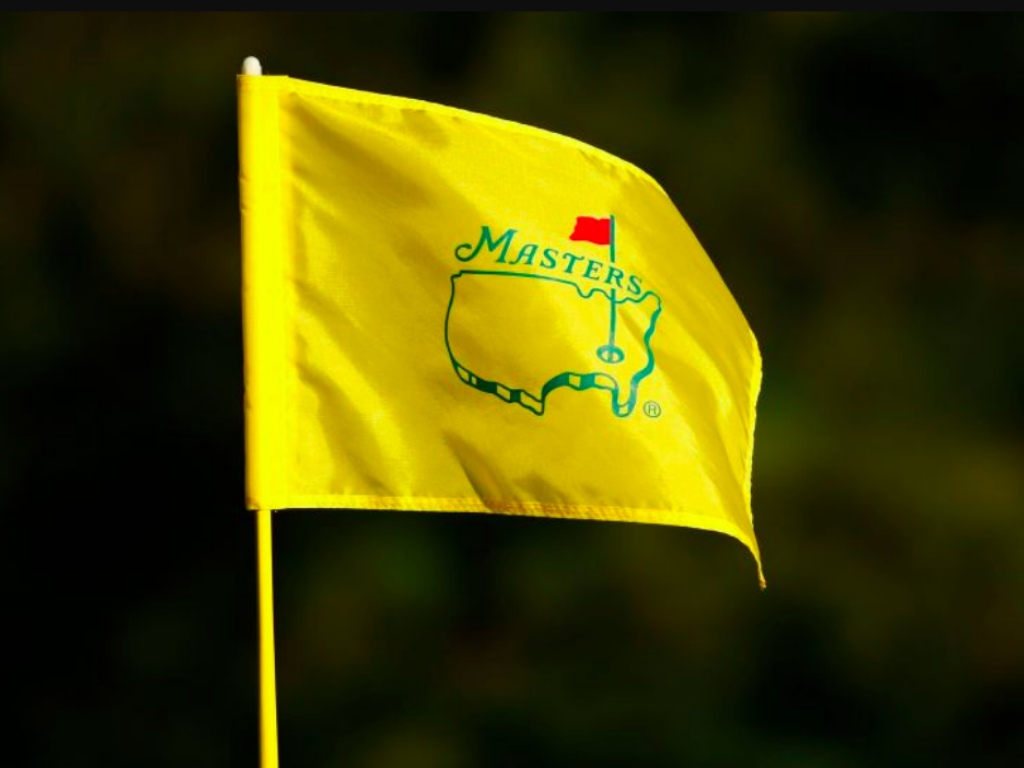
Since 2013, I have created a filtering process to help determine the players who are most likely to win the green jacket based on criteria that have strongly predictive outcomes to success at Augusta. The list of players that can win at Augusta is usually filtered down to 20-24 players and in that time I have correctly shortlisted every Masters champion.
This includes last year’s winner, Jon Rahm. Even though Rahm essentially walked away with the green jack and did not make it very close, there were some close calls on top of the leaderboard as I had filtered out Phil Mickelson (t-2nd) and Patrick Reed (t-4th) as the LIV Tour is still behind on providing advanced analytics for their tour. Russell Henley was also filtered out and finished t-4th, five strokes from Rahm’s winning score of 276.
If you’re watching at home, the “critical holes” that will likely determine the top finishers will be holes No. 7, 8, 11 and 13. The 11th hole is projected to be the most critical of holes as over the past five Masters the top players have gained nearly a 1.5 strokes for the tournament on that hole alone.
Just like last year’s column I will get the LIV Tour players I’ve filtered out of the way. Since LIV Tour does not provide ShotLink or Trackman data, it’s more of a guessing game as to how certain LIV Tour golfers are playing. I did utilize recent performance as well as performance at Mayakoba and Doral as they were two former PGA Tour courses that have some semblance of crossover to playing Augusta.
Phil Mickelson
Thorbjorn Olesen
Charl Schwartzel
Cameron Smith
Bubba Watson
Admittedly Cameron Smith and Phil Mickelson are hard to leave out, but both have not played well as of late.
Next, I filtered out the amateurs and all first-time professional attendees. The Masters has only been won three times by a first-time attendee: Fuzzy Zoeller was the last to win in 1979. Prior to Zoeller though, it was Horton Smith in the inaugural event in 1934 followed by Gene Sarazen in 1935
Ludvig Aberg
Akshay Bhatia
Wyndham Clark
Eric Cole
Santiago de la Fuente (a)
Nick Dunlap
Austin Eckroat
Stewart Hagestad (a)
Ryo Hisatsune
Lee Hodges
Nicolai Hojgaard
Stephan Jaeger
Jake Knapp
Christo Lamprecht (a)
Peter Malnati
Denny McCarthy
Grayson Murray
Matthieu Pavon
Adam Schenk
Neal Shipley (a)
Jasper Stubbs (a)
Out of the first time invitees the data likes Ludvig Aberg and Eric Cole to play the best at Augusta National.
I also filter out old Masters champions that I do not believe can get into contention anymore.
Fred Couples
Jose Maria Olazabal
Vijay Singh
Mike Weir
Tiger Woods
Recency has a strong predictive value for player performance and missing the cut in the event in the prior week greatly reduces the likelihood of winning the following week compared to players that miss the cut, take a week off, and then play the following week. Therefore I filter out all players that missed the cut at the Valero Texas Open last week.
Byeong Hun An
Harris English
Rickie Fowler
Ryan Fox
Zach Johnson
Tom Kim
Erik van Rooyen
Camilo Villegas
I will also filter out the players that have never made the cut at the Masters:
Kurt Kitayama
Adrian Meronk
A Tradition Unlike Any Other…
Augusta National has traditionally favored longer hitters and even moreso in the past 20 years of the event. Of course there has been exceptions as in 2007 the short hitting Zach Johnson ended up winning the event.
Critics of my filtering system point out Johnson’s victory as a case for short hitters being able to win at Augusta, but they neglect the fact that Johnson’s victory came in historically low temperatures in the 40’s with wind gusts reaching 35 mph. That made the par-5’s almost unreachable in two shots and the course stressed wedge play and short game around the green where Zach had a sizable advantage.
It is projected to rain early on Thursday and then the weather is supposed to be sunny and warm for the rest of the week. It depends on how quickly the course dries up, but if it does dry out fairly quickly that will give the longer hitters the advantage as they will be able to reach certain par-5’s in two shots that the shorter hitters cannot reach if they don’t hit a quality tee shot and there may be par-5’s that some of the long hitters can reach in two shots with a short iron. Therefore I will filter out the following players due to a lack of distance off the tee:
Corey Conners
Lucas Glover
Emiliano Grillo
Brian Harman
Si Woo Kim
Chris Kirk
Shane Lowry
Colin Morikawa
JT Poston
Justin Rose
Sepp Straka
Out of these players the data likes Lowry and Morikawa the most. Both have good history at Augusta and they both just narrowly missed the distance benchmark set in the filter and both are excellent long iron players.
Last year I created a new formula to better determine ball height as Augusta has historically not taken too kindly to a low ball flight. Out of the 5 players filtered out for low ball flight using the new formula the best finish was only t-29th by Si Woo Kim. This year I’ve filtered out the following players.
Matthew Fitzpatrick
Sungjae Im
Luke List
Joaquin Niemann
Justin Thomas
Every year I filter out the poor performers on approach shots from 175-225 yards as Augusta National puts a lot of stress on those shots. Last year I filtered out nine players and three of them missed the cut with only Jordan Spieth finishing in the top-15 (t-4th) as the rest of the players were never a threat.
Here are the golfers I’m filtering out due to poor play from 175-225 yards:
Patrick Cantlay
Cameron Davis
Jason Day
Tommy Fleetwood
Russell Henley
Max Homa
Rory McIlroy
Jordan Spieth
Nick Taylor
Rory had a nice outing at the Valero Texas Open and hit his irons better there, but appears to be struggling with a leftward miss. Other than that, Rory still has the game to win his first green jacket. Henley is usually one of the better iron players on Tour, but he has struggled this season from 175-225 yards and is a short hitter anyway.
I will also filter out Danny Willett as he is coming off injury and making his comeback at the Masters.
That leaves the 22 players that can win the Masters:
Keegan Bradley (150/1)
Sam Burns (60/1)
Bryson DeChambeau (25/1)
Tony Finau (50/1)
Sergio Garcia (100/1)
Adam Hadwin (175/1)
Tyrrell Hatton (80/1)
Viktor Hovland (35/1)
Dustin Johnson (40/1)
Brooks Koepka (16/1)
Min Woo Lee (70/1)
Hideki Matsuyama (20/1)
Taylor Moore (300/1)
Jon Rahm (12/1)
Patrick Reed (80/1)
Xander Schauffele (18/1)
Scottie Scheffler (4/1)
Adam Scott (100/1)
Sahith Theegala (50/1)
Gary Woodland (250/1)
Cameron Young (50/1)
Will Zalatoris (35/1)
Here’s my personal top-10 picks:
Keegan Bradley (150/1)
Sam Burns (60/1)
Bryson DeChambeau (35/1)
Tony Finau (50/1)
Viktor Hovland (35/1)
Dustin Johnson (40/1)
Hideki Matsuyama (20/1)
Jon Rahm (12/1)
Xander Schauffele (18/1)
Scottie Scheffler (4/1)
- LIKE186
- LEGIT75
- WOW24
- LOL25
- IDHT5
- FLOP17
- OB7
- SHANK67
-

 19th Hole5 days ago
19th Hole5 days agoDave Portnoy places monstrous outright bet for the 2024 Masters
-

 19th Hole3 weeks ago
19th Hole3 weeks agoJohn Daly stuns fans into silence with brutal opening tee shot on PGA Tour Champions
-

 19th Hole2 weeks ago
19th Hole2 weeks agoThings got heated at the Houston Open between Tony Finau and Alejandro Tosti. Here’s why
-

 19th Hole6 days ago
19th Hole6 days agoTiger Woods arrives at 2024 Masters equipped with a putter that may surprise you
-

 19th Hole2 weeks ago
19th Hole2 weeks agoReport: Tiger Woods has ‘eliminated sex’ in preparation for the 2024 Masters
-

 19th Hole3 weeks ago
19th Hole3 weeks agoCharlie Woods finds it tough going on American Junior Golf Association debut
-

 19th Hole2 weeks ago
19th Hole2 weeks agoAddiction, spinal fusion, and scam artists – Everything Anthony Kim revealed in candid interview with David Feherty
-

 19th Hole1 week ago
19th Hole1 week agoAnthony Kim says doctors told him that he ‘may not have much time left’ ahead of LIV return

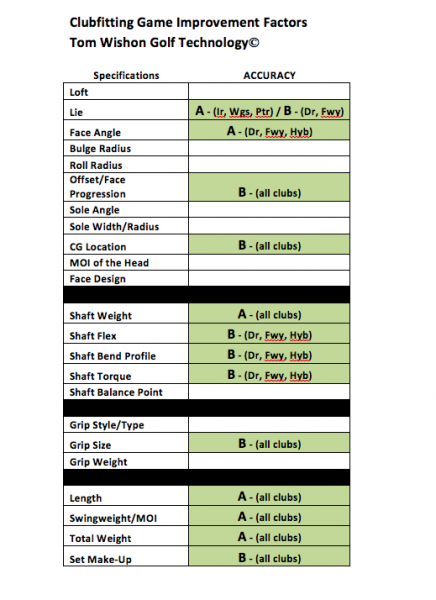


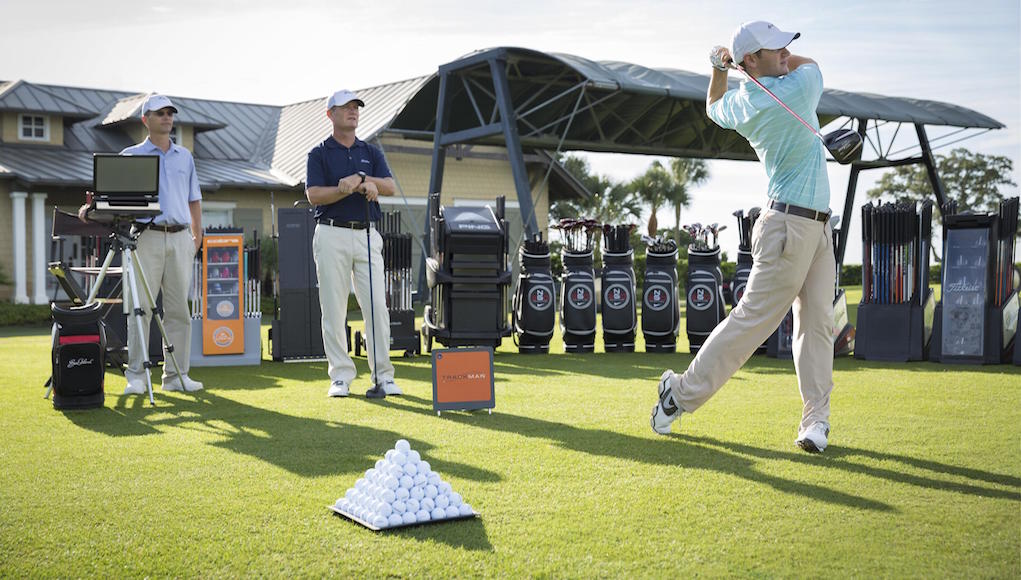
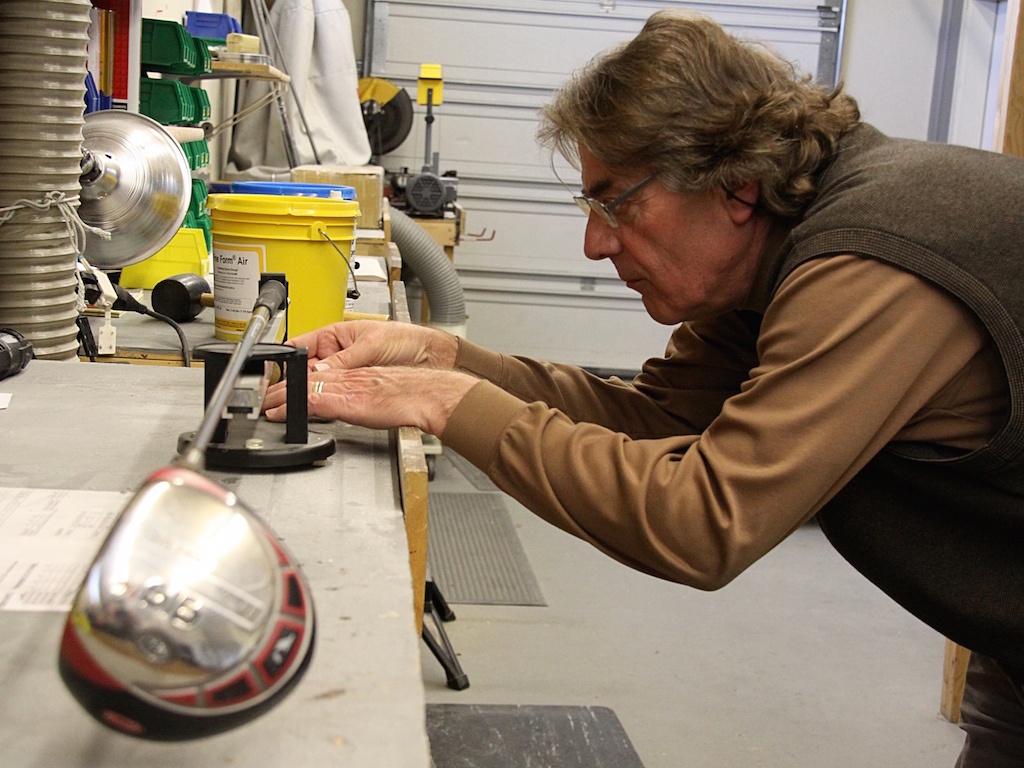

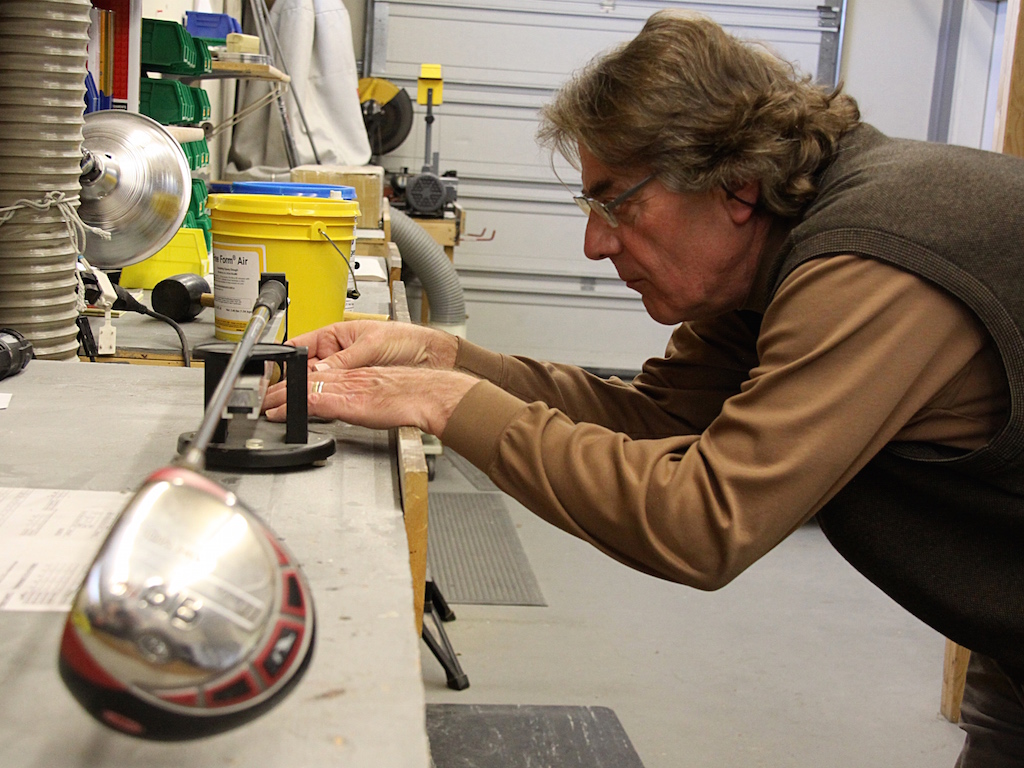
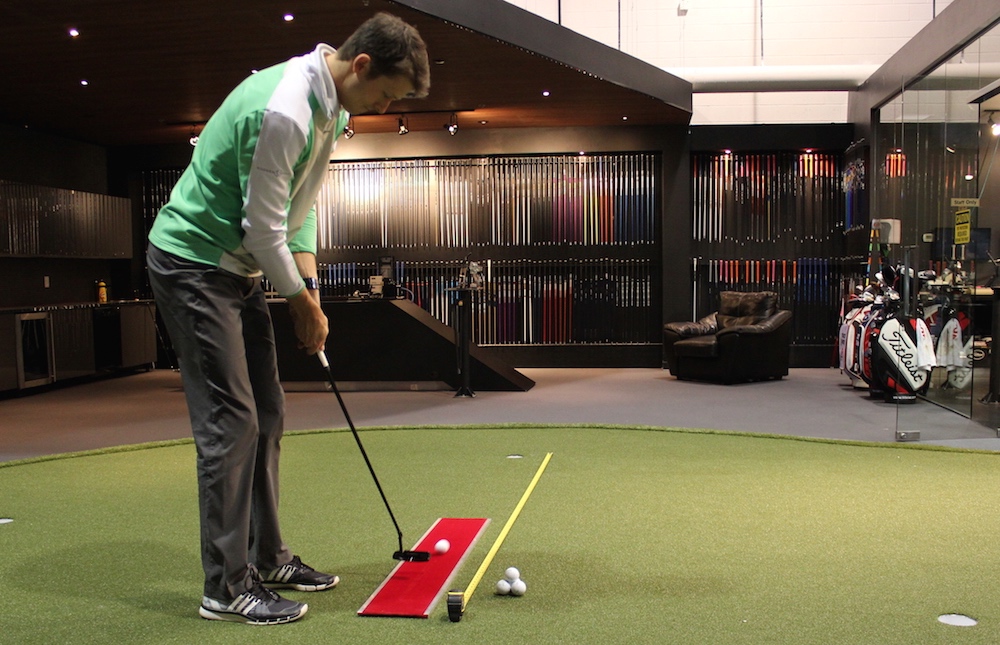
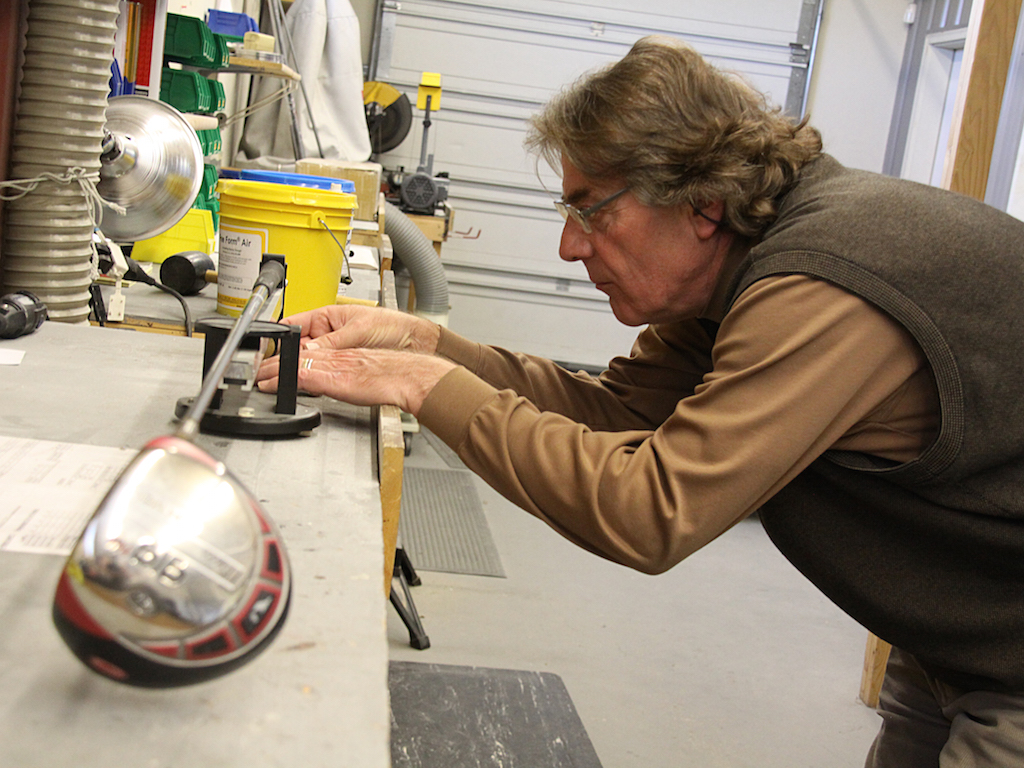














Dennis
Aug 14, 2013 at 10:46 am
Hello Tom,
An insighful and interesting article, thank you.
Can you tell me which factor(s) would have the most affect on off-center hits on irons.
Is it the “A effect” items: Lie angle, shaft weight/total weight, & length that would affect this in irons?
If so is there any one of these in particlur that would affect it most?
Or are there any other factors that would affect this?
I assume club length would have a bearing from its very nature, but I have seen in irons where the shaft is slightly shorter that the ball strikes closer to the heel (and not from the center), which i would have assumed the opposite would happen (i.e. strikes closer to the toe).
So I wonder could there be something else thats having a bearing then, like lie angle or something else.
And if so how it affects off-center strikes in this way?
I have tested it myself and seen smash numbers go from 1.33 to 1.44 from one club setup to another.
But even away from monitor numbers, its visible to see the ball mark on the face closer to the heel on one iron brand/set-up than another and while some manipulation by the player can get it back on center, its not as “automatic” as with their own irons or with a specific iron that suits them.
Thank you for the excellent information as always and hope i have not asked too many questions together 🙂
Dennis.
TCMPGolf
Jun 6, 2013 at 6:31 am
Tom-
Great article and insight. Everyone needs to READ the entire article word for word before making ill-informed comments about your words of wisdom. It’s all there, some are just skimming through this and posing questions based on information already covered/accounted for.
Good job and I look forward to reading the remainder of the series.
TCMP
Hunter
Jun 5, 2013 at 11:18 am
Tom,
Can you explain how to find the right weight shaft? I can feel the difference between light and heavy shafts obviously but I don’t know how to pick what is best for me other than to use my “gut”. I have always felt that I liked lighterweight shafts but I am playing a AD DI-7x that I think weighs 75 grams in my driver because it fits my launch characteristics well.
Thanks!
Tom Wishon
Jun 7, 2013 at 10:03 am
HUNTER:
The weight of the shaft is the number one controlling factor for the TOTAL WEIGHT of the clubs. Shaft weight also has an influence on the swingweight (headweight feel) of the clubs, though it is possible to make a club be different swingweights after changing from heavy to light or light to heavy in the shaft weight.
As mentioned in the article, these two weights of the club must be matched to the golfer’s natural or acquired sense of swing tempo, timing, rhythm, strength and feel. If the club has too light of a total weight or too light of a swingweight for the golfer’s swing tempo, timing, rhythm, strength and feel, he will get too quick and have problems being consistent with his swing. if the club has too heavy of a total weight or too heavy of a swingweight for the golfer’s swing tempo, timing, rhythm, strength and feel, he will labor more with the club trying to achieve his most consistent swing rhythm.
Fighting your tempo results in more off center hits and a broadening of variation in your swing path and delivery of the face to the ball – overall inconsistency.
Problem is, there is no measurement and no empirical test that can be performed to determine precisely how heavy or how light the shaft needs to be to match well to each golfer’s own sense of swing tempo/timing/rhythm. We use these guidelines to start – strong, forceful transition move, aggressive downswing golfer uses heavier weight shafts, and vice versa – but it has to be done on a bit of a trial and error basis.
You’ll know when the shaft weight/total weight AND the swingweight are right for you when you do not have conscious thoughts about needing to slow down or swing smoother or swing more aggressively. When the shaft weight/total weight AND the swingweight are right for you, you don’t fight your tempo and rhythm.
TOM
G
Jun 1, 2013 at 11:58 pm
I don’t understand.
How can grip weight not be a factor? That’s impossible. Also, how can grip type/style (i.e. various textures and feel) not be a factor? Ridiculous.
td
Jun 2, 2013 at 9:52 am
It has an effect…just less of one compared to the other variables. Reread the article.
G
Jun 2, 2013 at 12:28 pm
Still makes no sense, especially when a grip weight can vary from anywhere from 25 grams all the way up to 75, depending on the type. Telling me that if you change from a grip that weighs 25 to the one that weighs 75 grams, there isn’t going to be much of a difference? No way! That’s the same as counter balancing. Of course it’s going to be a huge factor in the way it plays. He talks about swingweight and total weight – but he forgot to mention that the grip has a big factor in how it affects both of those things.
Jaacob Bowden
Jun 2, 2013 at 12:36 pm
“Only when an excessively heavy or extremely light grip is used does the weight of the grip show a noteworthy effect on the total weight of the clubs.”
yo!
Jun 2, 2013 at 2:37 pm
i see you read the article instead of just skimming the headings
G
Jun 2, 2013 at 10:32 pm
But he doesn’t go into enough detail about it to say that it DOES have a huge importance – it’s on;y touched upon briefly and there’s no real analysis of it here but other facts are analyzed. Yes it bothered me a bit.
Dave
Jun 12, 2013 at 10:46 pm
It doesn’t. Stop trolling and pretending you know more than Tom, it’s annoying. If you read his article he explains it perfectly.
Jack
Jun 26, 2013 at 11:54 pm
Sorry it bothers you, but this is a long article as is. Basically I would think that the grip weight is part of the total weight. It is part of the equation. If you say huge importance, is that relative to all other other factors? Just calling it having huge importance doesn’t really mean much in the big picture (of a golf club).
Tom Wishon
Jun 3, 2013 at 12:50 pm
G:
If you re read the article, under the TOTAL WEIGHT section you will see that I said that 95% of the time, the grip weight does not factor into the total weight and swingweight of the club very significantly. But that leaves 5% of the time it can have a small additional effect to the total weight and swingweight.
The main reason that I do not place grip weight as an A or B factor in Accuracy is because you can install grips to be oversize by using layers of build up tape under the grip. So you would be using the same weight grip as before, and the layers of masking tape simply do not add enough to the total weight or lower the swingweight by more than a very small increment. For decades, this was the only way that oversize grips were made, as there were no separately molded larger size grips available.
In the case of the grips molded larger in size, yes they do weigh more than conventional size grips. But two things here make this only a rare case for them to be a way to improve accuracy. 1) the vast majority of molded oversize grips weigh within 10g of their conventional version grip. So that 10g is pretty insignificant in its effect on accuracy. 2) If one is looking for fitting help for accuracy, they need to be focusing on all the other A and B effect factors I listed in the article because these are the ones that are going to have the MOST EFFECT on helping with accuracy. Do that and you do as much as you can do to have fitting help improve accuracy. Grip wise, you always fit the grip size first and foremost so that it fits the golfer’s hands AND fits them for COMFORT.
Since the VAST MAJORITY of golfers are properly fit for grip size within a range of +1/32 down to -1/64″, and since these sizes are easily made using light build up tape under a conventional grip, that means the times in which a golfer may use a grip molded heavier are quite small in the overall scope of the clubfitter’s work. But even when that does happen, the main accuracy benefit that heavier molded grip is offering the golfer is from it being the right SIZE because virtually every heavy grip is larger too – and not from its weight effect on the club.
TOM
Sean
Jun 1, 2013 at 8:30 pm
Thanks for the insightful article Tom.
Tyler
Jun 1, 2013 at 2:42 pm
Thank you Mr. Wishon for this article. It is probably the most enlightening and intuitive article on fitting that I’ve read. My question is in regards to iron sets. If i understand the article correctly, you’re saying that an optimal set of irons would have have heads that aren’t too progressive in offset and loft change (for example maybe Mizuno MP-53), but have shafts that gradually lighten up as the clubs get longer. So maybe your PW shaft would weigh 130 grams and your 4 iron shaft would weigh 100 grams. Rather than a set (such as Ping G25) that has the same weight shaft throughout the set, but which features heads with progressive offsets and CG locations.
I ask because I’ve always had trouble with my MP-53 4 and 5 irons with DG S300 shafts not launching and carrying enough. I was thinking of going with Mizuno MP-H4 4 and 5 irons as they feature a lower CG with the same DG S300 shafts, but now I’m thinking that what I really need to do is just lighten the shafts of my MP-53 4 and 5 irons. Am I understanding the data and applying it correctly?
Thanks in advance,
-Tyler
Tom Wishon
Jun 3, 2013 at 12:38 pm
Tyler
If the main problem is not launching the 4 and 5 irons high enough so the carry distance is compromised, the first and best step to take is to use hybrids or other iron heads that have a lower AND a more rear located center of gravity position. In the end, hybrids will do this far better than irons because the wider body of the hybrid allows the CG to be farther back from the face than can be done in any iron head design.
Shaft wise you can try that with the same DG S300 shafts you have in your irons, but if you see that the height and carry of the 6 iron starts to get to be a little less at times than you would like, then you might want to think about either a little more flexible shaft in the hybrids OR one that has a little more flexible tip section than do the DG’s. But just going lighter in the shaft weight is not typically going to help increase launch angle unless that lighter weight shaft is also a little more flexible and/or a little more tip flexible than the DG’s.
TOM
rtylerg
Jun 3, 2013 at 9:50 pm
Thank you Mr. Wishon for your feedback and time. That makes perfect sense.
-Tyler